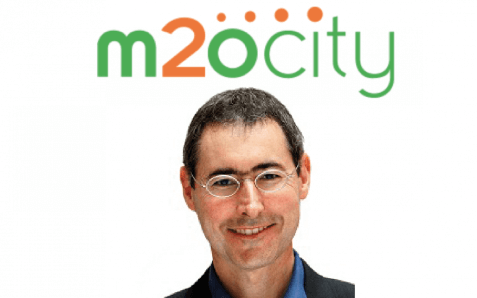Prior to joining this newly-created (early 2011) affiliate of Veolia Water and Orange operating smart metering networks, Christian Gacon held a number of key positions in the France Telecom group in areas such as network operation, regulation, strategic marketing, network product development, and enterprise product development. Christian Gacon is a graduate of the National Engineering School of Telecommunications.
A process based on what a mobile operator would use has been set up but the follow-up work can be tricky, given a large number of contributors. Workflow has also been implemented bearing the analysis of a site’s potentiality, whether the site in question has been approved or not, a report of the technical visit, whether the site has been approved by the hosting entity, whether the radio engineering department has validated the site or not, whether there may be a risk of harmful interferences. Furthermore, all contributors must be aware of the work in progress on a given site to be in sync, to ensure that the project coordinator has a clear overview and can monitor the project smoothly. It may occur that a site has been dropped or rejected by the radio engineering department but the associated information may not be available or on display. Originally, this data was to be found in spreadsheets but handling hundreds of requests at the same time became an issue.
With a click of the mouse, a contractor can for instance have an overview of the current tasks in progress and what remains to be done. The tool flexible, with a pleasant look and feel which is important to build support on the side of the end-users.
1. Which network infrastructure challenges do you face in your everyday activities?
Our activities consist of deploying fixed radio telecom networks in various French metropolitan areas, which involves looking for specific sites, validating them, and installing our communication devices on approved sites. There is a significant number of coordination tasks involved, especially as far as contractors are concerned. In fact, the three phases previously mentioned (site searching, technical validation, and installation) are closely linked together.A process based on what a mobile operator would use has been set up but the follow-up work can be tricky, given a large number of contributors. Workflow has also been implemented bearing the analysis of a site’s potentiality, whether the site in question has been approved or not, a report of the technical visit, whether the site has been approved by the hosting entity, whether the radio engineering department has validated the site or not, whether there may be a risk of harmful interferences. Furthermore, all contributors must be aware of the work in progress on a given site to be in sync, to ensure that the project coordinator has a clear overview and can monitor the project smoothly. It may occur that a site has been dropped or rejected by the radio engineering department but the associated information may not be available or on display. Originally, this data was to be found in spreadsheets but handling hundreds of requests at the same time became an issue.
How did IT-Development solutions/products facilitate your approach?
Using IT-Development tools made it possible for us to simplify the coordination aspects by providing global project overviews. We were able to secure the process and workflow management. Sharing information – such as site descriptions, addresses, work in progress, and so on – became much easier. End-users were given access to all the documents pertaining to technical visits, implementation files, i.e. how the installation was carried out on site.With a click of the mouse, a contractor can for instance have an overview of the current tasks in progress and what remains to be done. The tool flexible, with a pleasant look and feel which is important to build support on the side of the end-users.
